Copy Trading in the Meme Coin World: Strategies, Pitfalls, and Lessons Learned
 Poko Blue
Poko Blue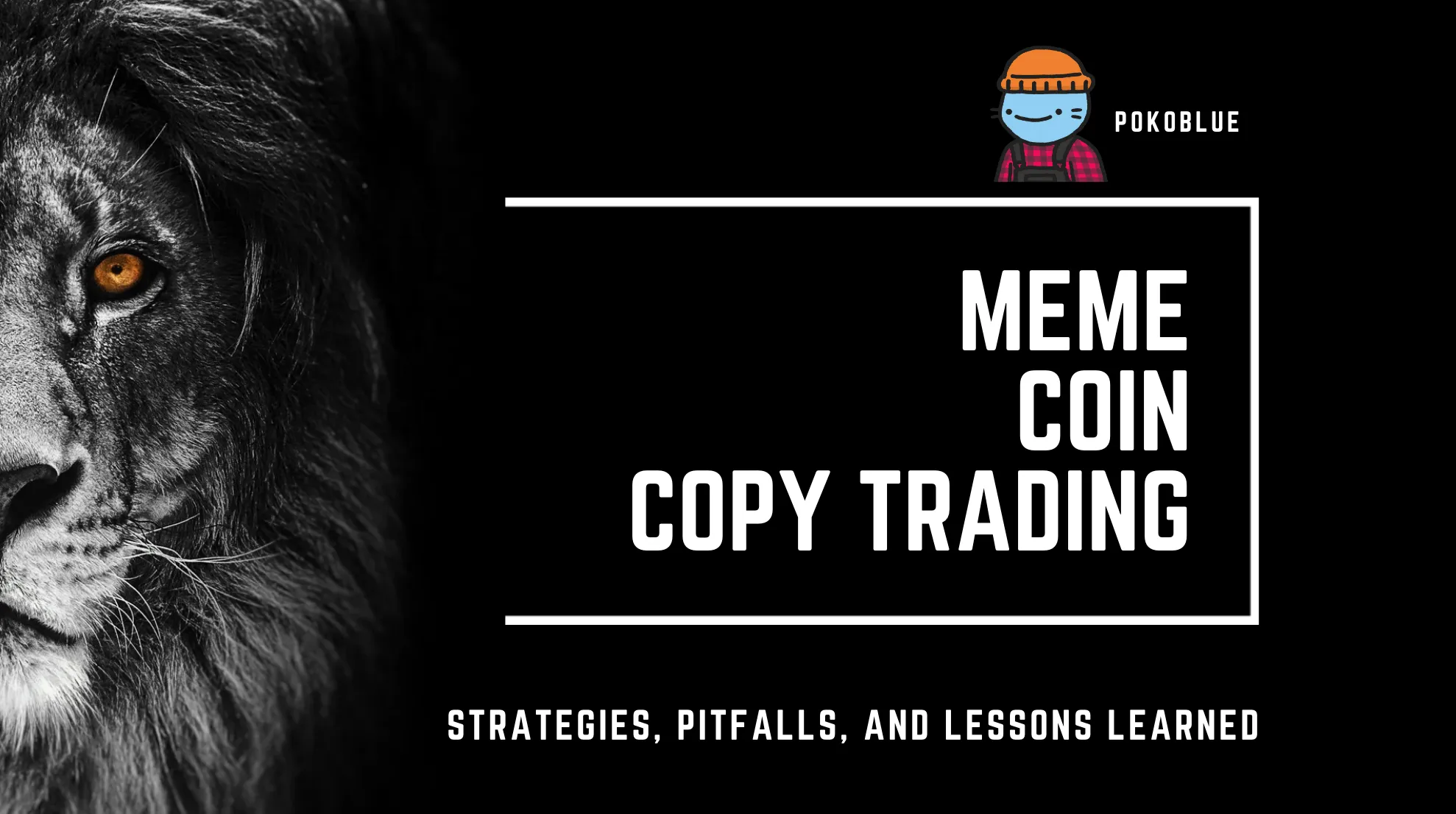
What You’re About to Read:
My Meme Trading Journey: Dexscreener, Pump.fun, Trading Bots, ect
Copy Trading: Approaches and Limitations
Lessons Learned from Three Weeks as a Full-Time Meme Coin Trader

It all started with this picture. I was really curious about how trading these meme coins worked, so I threw some money into it. The results, though? Pretty bad. This got me wondering — who actually profits from this? It felt like pure pump and dump. The price would stay flat for days, then suddenly spike out of nowhere. Some coins would launch and shoot up 10x, even 50x, only to crash soon after.
Then, I stumbled upon this trader’s. Observing his trading style was a real eye-opener. Just looking at the chart above, I thought he had to be losing money — it didn’t follow the typical “buy low, sell high” strategy. You can see a bunch of green bubbles (buys) near the top, with only a few red bubbles (sells) lower down. But when I looked deeper into his actual performance, his PnL were shocking. That’s when he really grabbed my attention.
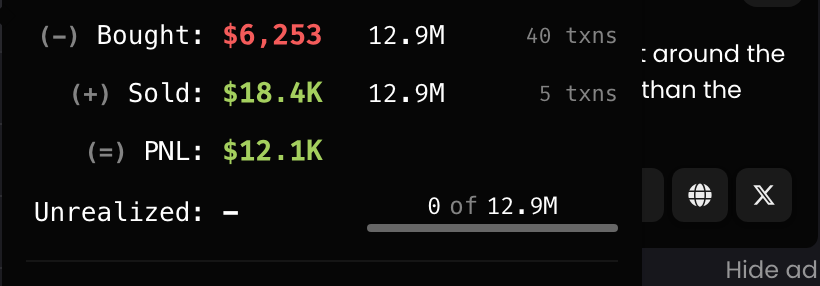
Yes, 12.1K profit! Seeing that, I started thinking — why not learn from this guy and try copying his trades? But I decided against using a bot; I wanted to understand his trading techniques myself, not just automate it. This was about learning the strategy and mindset, not just following along blindly.
The start of the end
So, I started by creating a new wallet and transferred 1 SOL into it. Then, I began tracking his trades by adding his address on Solscan and refreshing constantly. It ‘s a bit boring, but every time a new transaction popped up, the excitement kicked in. I’d quickly check the chart, open Dexscreener, enter the amount to buy, and sign the transaction with my Phantom wallet. My lot size was pretty small — just 0.1 SOL per trade. But believe it or not, by the end of the first day, my balance had almost 3x. It was wild to see that 1 SOL grow like that!
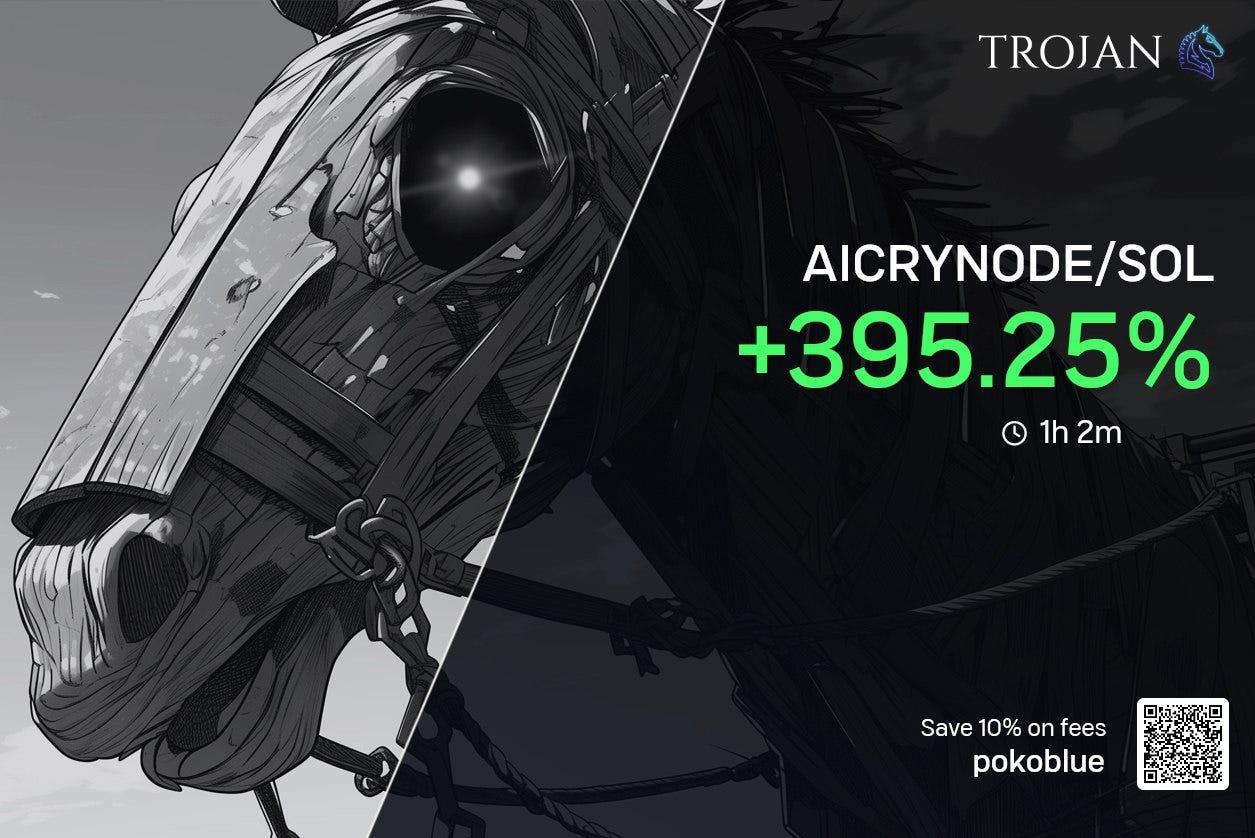
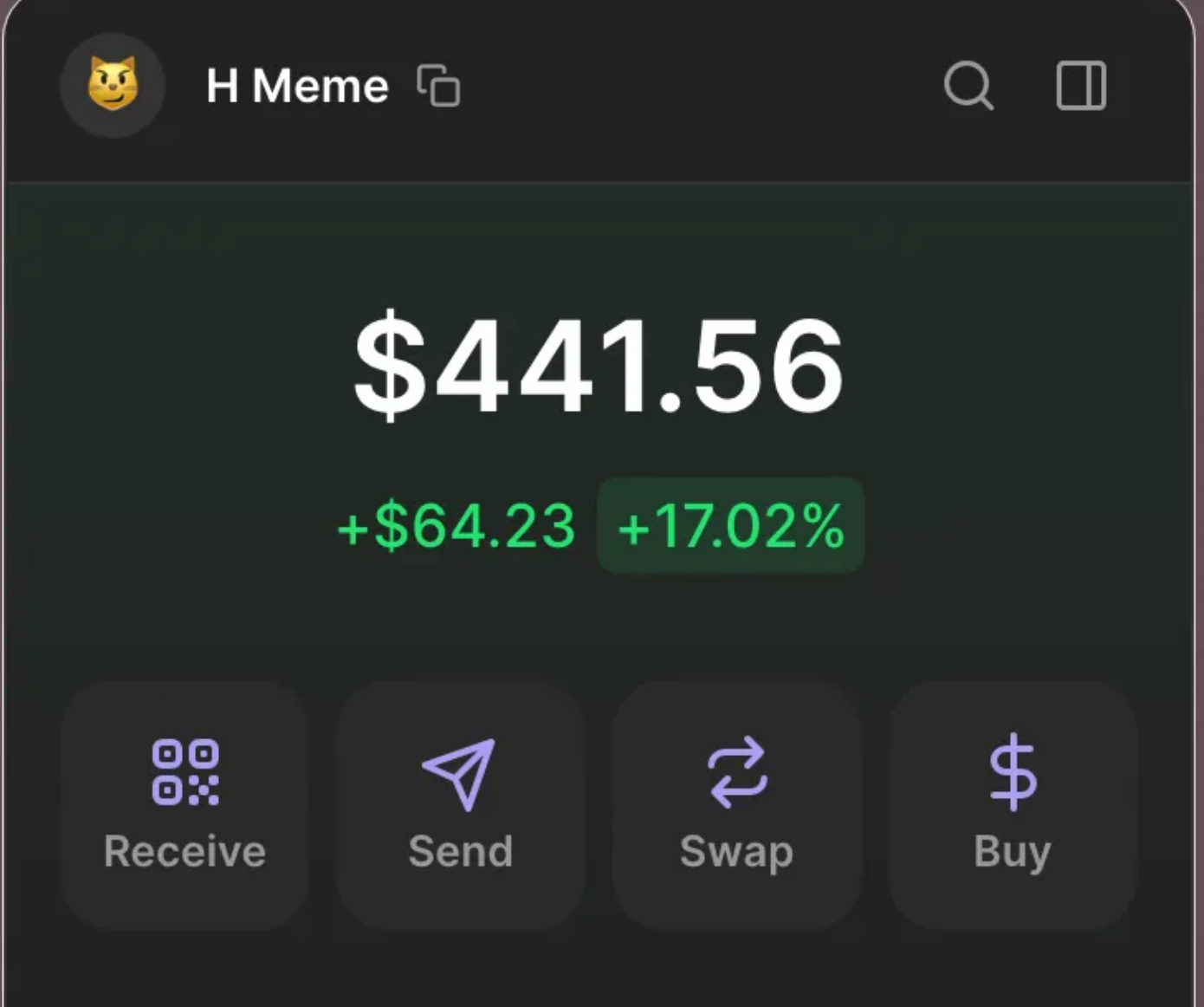
I kept following his trades for a few days, and my wallet kept growing — from 440 USD to almost ~900 USD in just a week. That initial 3x boost on the first day was incredible, but the gains each day afterward were smaller, but the win rate stayed impressively high. By the end of the first week, I started thinking, “Wow, making money is so easy!”
I started making longer-term plans, even considering sharing this strategy with my brothers and close friends — I wanted them to earn them too. But something about crypto has taught me some hard lessons over the last two bull and bear cycles. So, I decided to hold off for another week, just to test things a bit more before getting anyone else involved.
Need more proper tool !!!
Keep refreshing Solscan and buying with my Phantom wallet wasn’t very effective. When the price pumped, it moved fast — just a few seconds later, it could slip right out of my range. To keep up, I’d have to increase my slippage %, but sometimes the chart would dump just as quickly. Every second mattered, and that’s not even counting the times when a transaction would be pending, only to fail afterward. All of this made me start researching the tools that meme coin traders use, because doing this manually just wasn’t going to cut it, especially for bigger transactions. Here were my pain points:
I needed something to detect new trades instantly.
I needed a faster buy/sell tool.
Trading Notification
I just needed a tool that would alert me as soon as that guy made a transaction, so I wouldn’t have to keep hitting F5. Then, I found this fantastic tool — it works like a charm. Cielo.
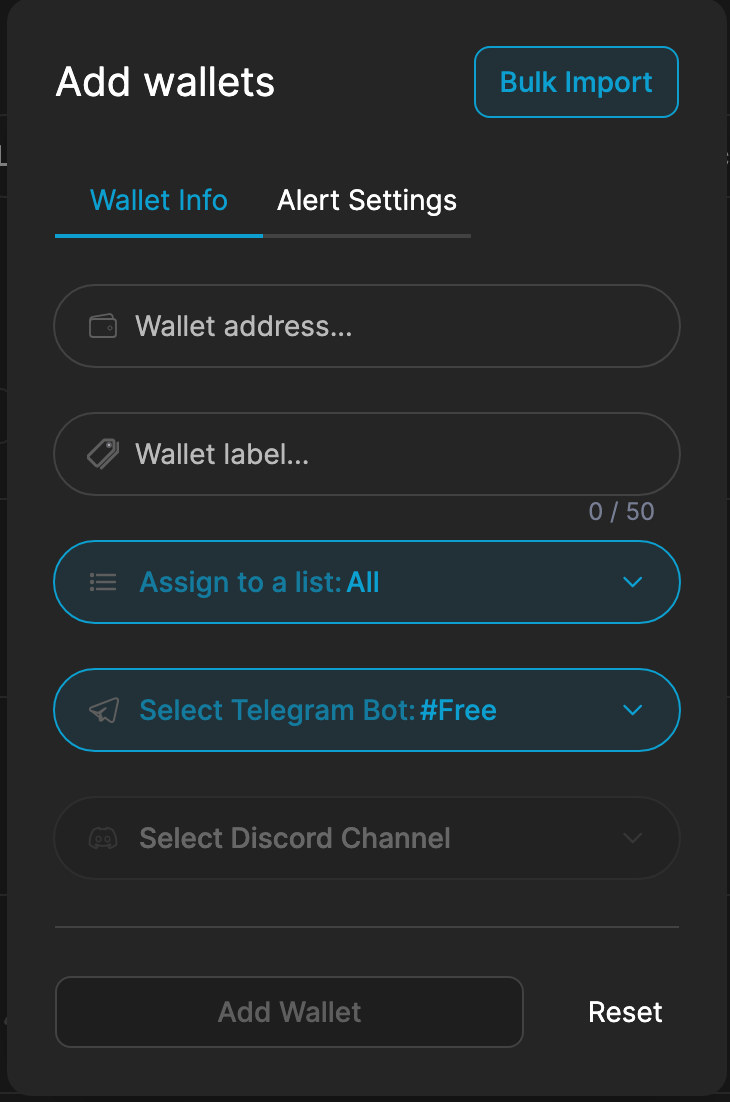

First, you enter the wallet you want to watch, and whenever there’s a new transaction, it sends you a notification on Telegram. You can find it url below.
URL: https://cielo.finance/. (Free)
This tool was a real game-changer. Constantly hitting F5 had me glued to my screen all day. The faster you can spot a trade, the better your chances of copying it accurately, so this saved me a ton of time. While waiting for notifications to pop up, I started thinking — why not add more traders to copy and potentially make even more?
Find more great trader to follow
First, I check the Top Trader tab in Dexscreener, which displays a list of top traders for the past 30 days, 7 days, 3 days, and 1 day. I usually select the 7-day option, but not always. If the coin is newly created, I opt for the 1-day option.

Check the PNL column and click the filter icon in the TXNS column to view his trading icons on the chart.
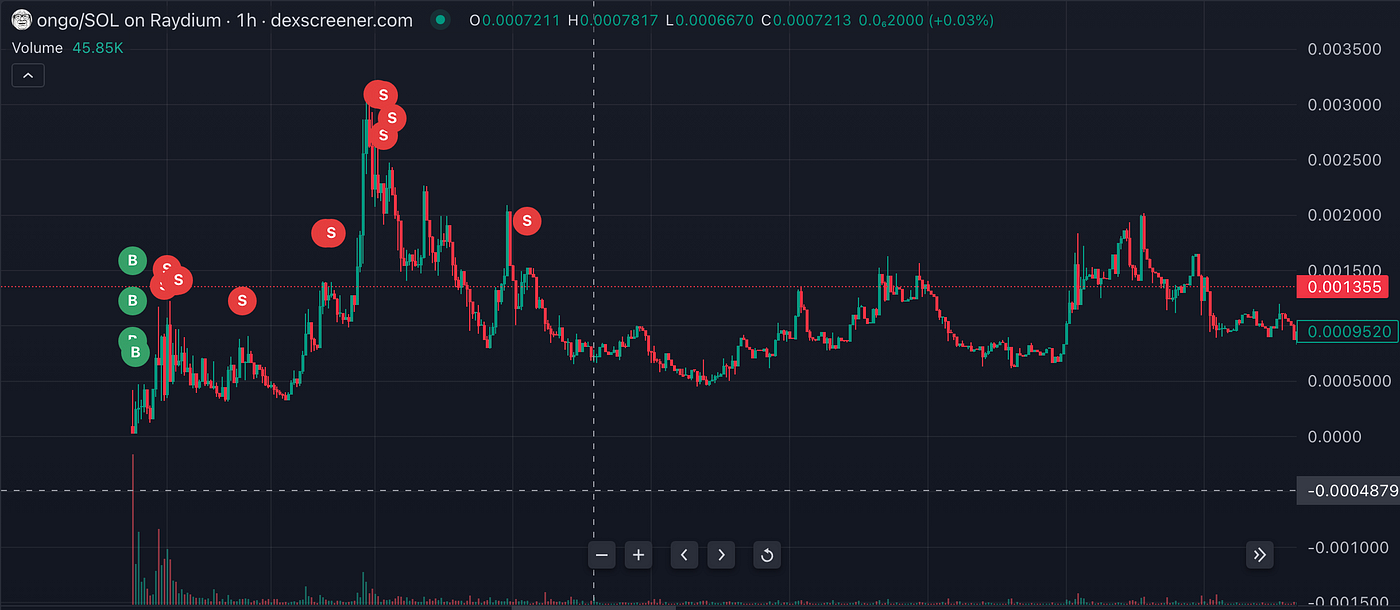
So, I added few more traders using the same approach, only picking those who’d made big profits. But the results were terrible. 9 out of 10 traders turned out to be a bust, and I kept losing by following their moves. Each trader had such a different style, and it quickly became confusing. Returning to my main objective, I just want to understand their approach and mindset. Finally, I decided to go back to sticking with my first trader. It just easier for me to focus.
Gotcha!
By the middle of the second week, I started wondering if this trader might actually be an KOL. So, I took his wallet address, popped it into Twitter, and there he was — a meme coin influencer with 11K followers. (And in just three weeks, his following had jumped to 16.5K!)
This opened my eyes to the darker side of meme coins. But first, let me finish telling you about the other tools I used — I’ll definitely come back to this part.

The trading bot
Back to my second pain point — Phantom was just too slow for trading meme coins. That’s when I found Trojan Bot (don’t let the name scare you; it’s actually very safe), a Telegram bot that speeds up transactions significantly. I come from a time when my dad would call a stockbroker to buy or sell shares. Back then, the internet was just starting, with 56K modems and no online trading platforms yet. So seeing this bot in action was pretty impressive. With Trojan Bot, I could buy a new token in just two taps — sometimes even one. It’s faster than buying a token in CEX, and the transaction success rate is incredibly high. Plus, it allows for limit orders (both buy and sell), which is a total game-changer.
URL: https://trojan.app/
It charges a 1% trading fee on both buys and sells.
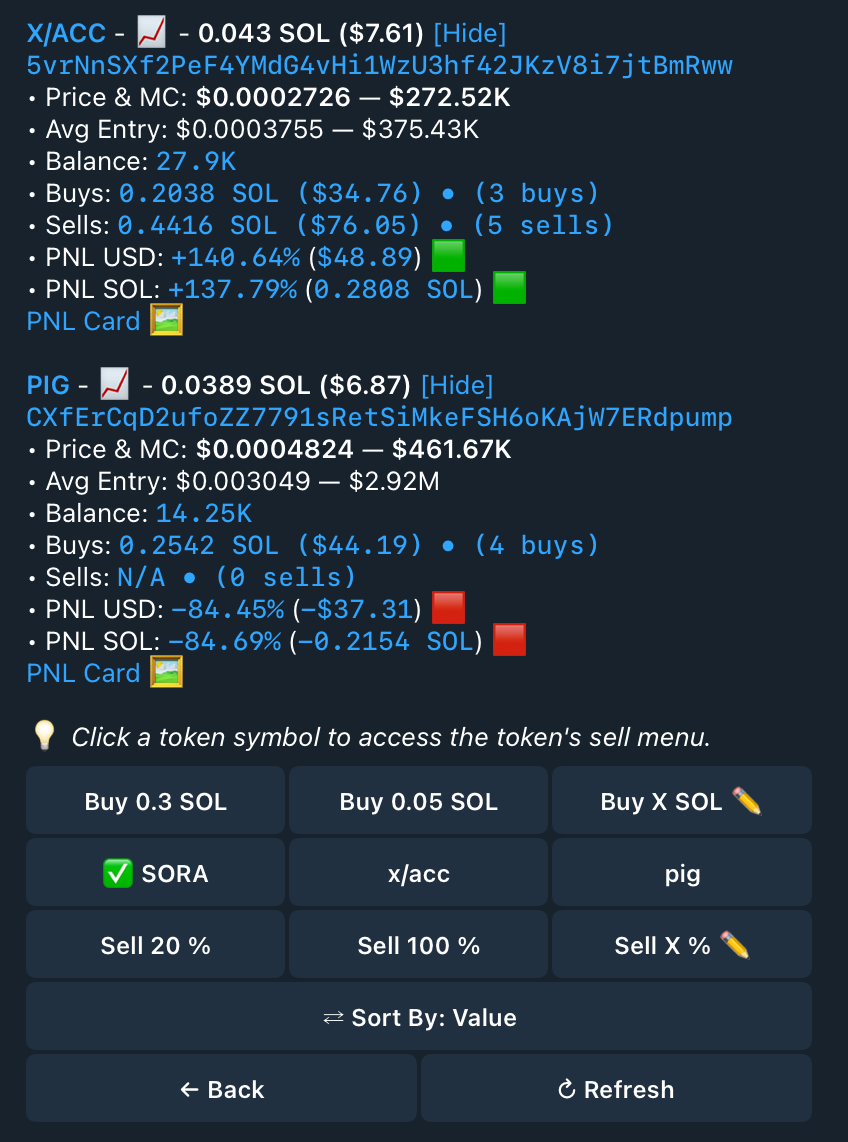
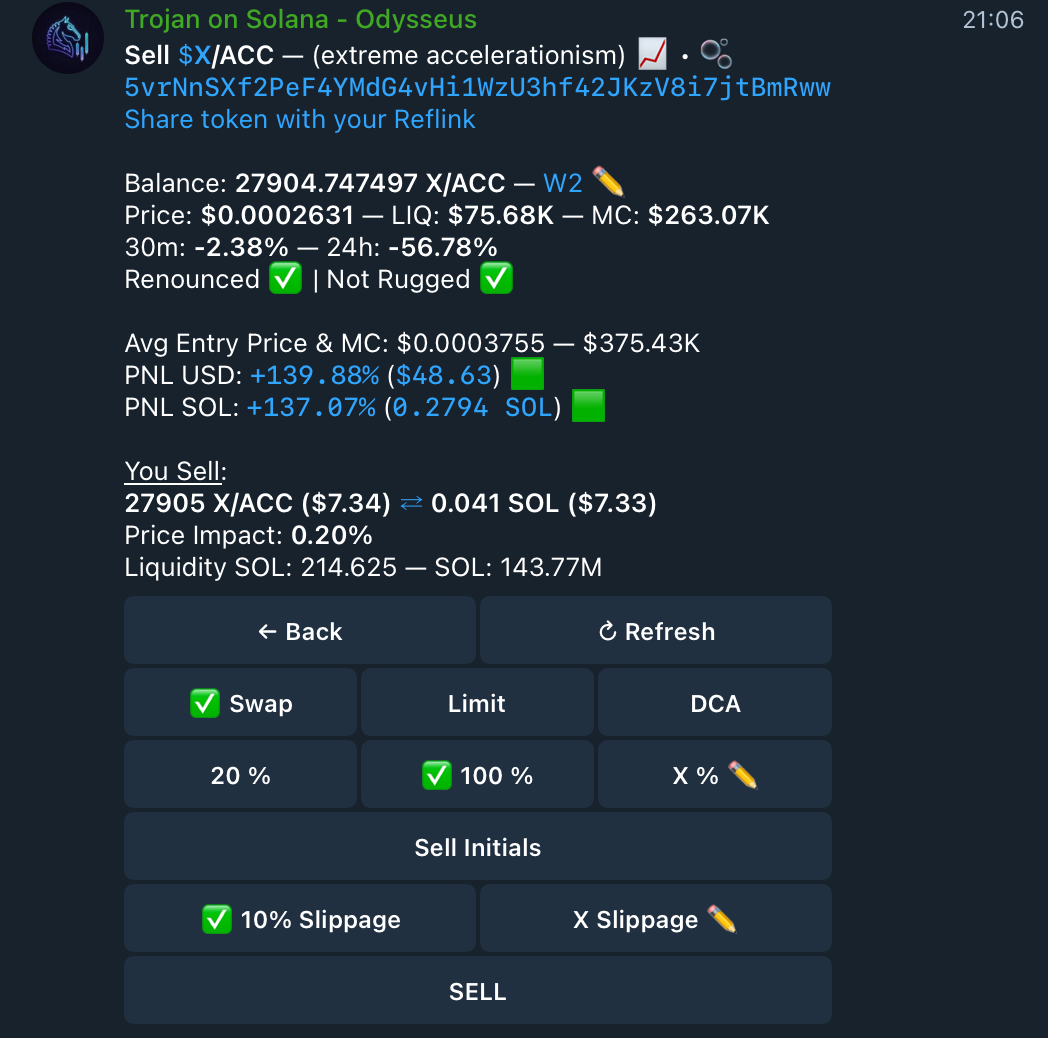
I forgot to mention that every night, that trader almost completely empties his portfolio. He rarely holds any trading pairs overnight, which sounds ideal. But here’s the point: his trading sessions start around 9 p.m. and often go until 5 a.m. His timezone is quite different from mine. If you leave tokens overnight, they typically drop in value. 5 out of 7 mornings, my overnight holdings were deep in the bad negative. So, having a sell limit option was a lifesaver.
Pump.Fun— Meme Launchpad
In the second week, the trader I was following started introducing me to Pump.fun. He might have been trading on Pump.fun for a while, but I hadn’t been able to follow those trades since I couldn’t buy directly on Dexscreener. To trade on Pump.fun, you have to buy through their website or use a bot. If you check out the Pump.fun website, you’ll see it’s pretty rough — the UI isn’t intuitive, the search function doesn’t work well, and navigation is still buggy. Fortunately, Trojan Bot supports trading on Pump.fun, so I decided to make my first trade Trojan Bot.
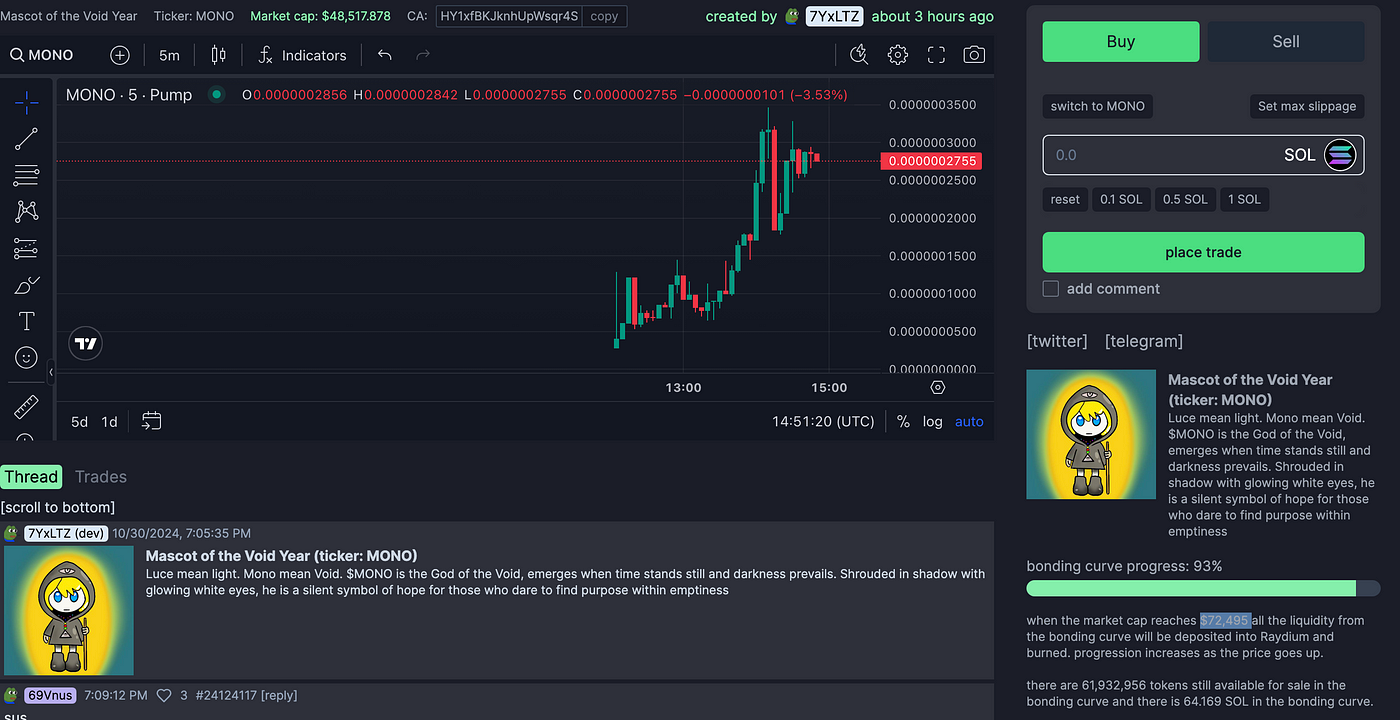
In this pic, the bonding curve progress is 93%. When 100%, all trading will stop for a while and we continue trading in Raydium.
To give you a brief overview, Pump.fun acts like a launchpad for meme coins. Most meme coins start trading there, and honestly, most don’t survive beyond Pump.fun. But if a coin’s market cap surpasses a certain threshold (usually around 72K), all trading is halted on Pump.fun, and its liquidity is automatically moved to Raydium with a permanently locked status. After that, you can trade it normally on Dexscreener or with any bot. They call this process the “bonding curve” progression. However, even when a meme token leaves Pump.fun and starts trading on Raydium, most of them experience a quick spike followed by a steep drop within minutes.
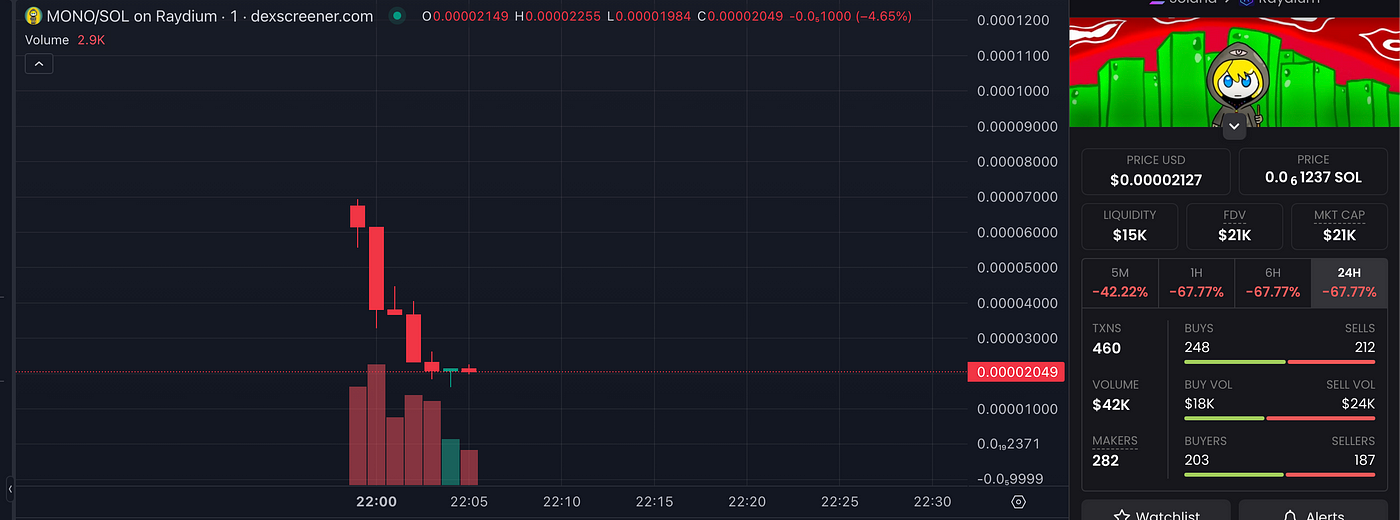
If you compare this picture with the one before, it’s the same meme coin — only this time, it’s just moved out of Pump.fun. It crashed within five minutes of leaving Pump.fun, which is a very common pattern.
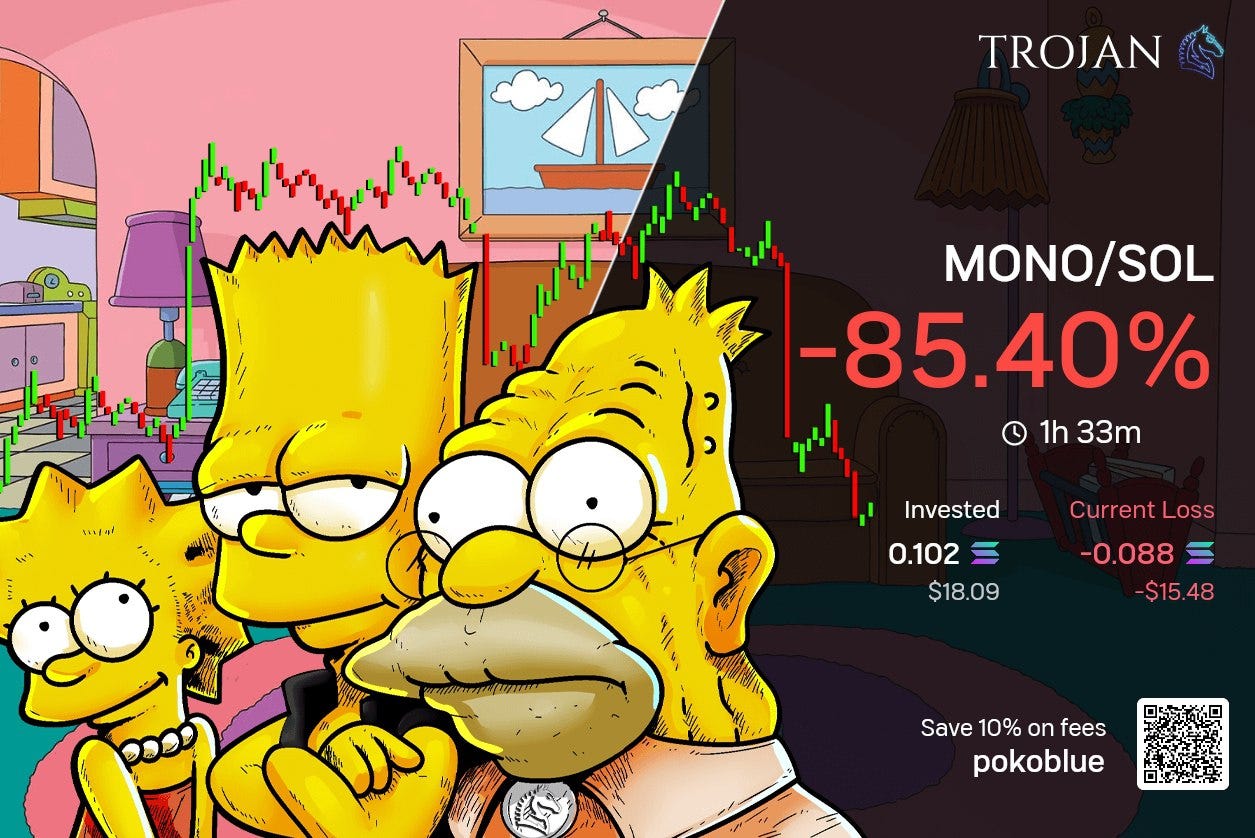
The Hype!
But you might wonder: if it’s usually this bad, why do people still mess around with it? The answer is in the picture below.

I bought this token early on Pump.fun and kept buying (following the trades) after the bonding curve process. The total I invested was less than 0.3 SOL. I watched it pump like a rocket in the first hour of trading. If I had sold at the top during those few minutes, I would’ve made around 6–8 SOL — a 20x return in just an hour! I’d never seen anything like it with my own eyes.
However, as you can see in the picture, I didn’t sell at the top. Instead, I sold later, after it had dropped significantly. I was really curious why that trader didn’t sell either. From his usual trading pattern, he typically takes some profit to cover costs once the price goes up 1x-2x, then lets the rest ride. So, I checked his Twitter to see if something was up — maybe he thought it would go even higher. And then, I found this:

It turned out he hadn’t planned to hold; he simply didn’t realize the token was going to shoot up like that. By the time he came back, it was too late, and he posted about it to the Dingus devs.
It might have been just another funny day for him, but not for me — I missed out on a 20x coin!
After that event, I started checking his Twitter more frequently. And I found something truly eye-opening when I combined what he posted on Twitter with his trading entries.
Don’t believe what they say, but believe what they do

This isn’t 100% accurate in terms of timeline, but it’s a common pattern I’ve noticed. I’m not here to say it’s right or wrong — I’m not trying to act as a judge or cybercrime police. I just want to share my observations based on my research. From what I’ve seen, every time he posts on Twitter (indicated by the blue Twitter icons on the chart), his bag are already loaded up.
To be fair, his selling after those posts doesn’t significantly impact the chart when the meme coin’s market cap is high — say, over 500K. But when the market cap is below 100K, his large sell-offs can make a noticeable dent. Based on the chart, he doesn’t take profits all at once; instead, he sells in smaller chunks, around 10–20% at a time.
Also, If you check his Twitter, you’ll see mixed reactions — many people thanking him for the tips and celebrating their gains, but also a fair share of others who are angry about their losses. His timeline often shows him in arguments with some of these followers.
But here’s the key point: what if every meme coin influencer is doing this? In that case, wouldn’t our follow-buys essentially just become their exit liquidity? I’m not saying that every meme post works this way — it’s just my hypothesis. I’ll leave it to you to think about the potential consequences.
Copy Trade is not always profit
Back to my copy trading experience in the third week. His main focus remained on Pump.fun. Naturally, the win rate on Pump.fun is pretty low. Over the next few days, my portfolio steadily dropped — from 5 SOL to 3, then 2, and eventually down to just 1 SOL. But when I checked his wallet, he was still making a profit each day, though his average earnings were lower compared to the first week I followed him.
So, I decided to take a break and look back to analyze why my copy trading was leading to different results than his. Here’s what I concluded:
Our lot sizes were different.
I didn’t buy every time he did.
I took profits earlier than he did.
These three factors combined to create a different outcome. When I lost, my losses were proportionally bigger than his. This is because, even though my lot size was similar or lower to his, it represented a much larger portion of my total portfolio.
For example, if he invested 0.5 SOL in a trade, that might only be a small fraction of his overall holdings. But for me, with a smaller portfolio, a 0.1 SOL trade would make up a significant portion of my total balance. So, each loss had a much greater impact on my overall balance than it did on his.
Also, I didn’t follow his additional buys, since that would have increased my overall lot size and risk. This meant that when he added to a winning trade, he could amplify his profits, while I missed out on that extra gain. Additionally, when I won, my profits were lower because I took them earlier, whereas he would let his profits run longer to maximize gains.
So, I decided to stop following him on Pump.fun and focus on his trades with a higher win rate. But as you might guess, those three issues didn’t completely disappear. While the win rate might be similar, the differences in earnings and losses remained.
The End for a New Beginning
This brings me to the final part of this article. If you’re asking how I feel about trading meme coins or copy trading, my answer is: I just haven’t been able to make it profitable in long term. It also consumes a huge amount of time to follow trades this way. Sure, if I used a bot to automatically copy trades, the outcome might be different — but not necessarily better. The main issue is that the trading pattern doesn’t align with my portfolio size. So here are my key lessons learned:
I can copy trades, but I can’t completely replicate his approach because our portfolio sizes and risk tolerance are different.
Trading isn’t just about entry points or technical analysis; money management (like lot size and follow-buys) is crucial. But the most important element is mindset, which is almost impossible to copy.
Don’t just believe what people say — look at what they actually do.
In the long run, meme coin trading just isn’t a good fit for me.
Looking across my other crypto assets, I realize I should take some profits at some point — I can’t just wait for everything to 100x. That might be too late.
Cut lost and asset reallocation are necessary
I had hoped that by following this strategy, I’d find something that could help my brothers or close friends get richer. But, unfortunately, I’m afraid it isn’t.
At the very least, I’m glad to share these insights with you. If you’ve read this far, I truly appreciate it. And if you ever feel like sharing your own story, in whatever way you choose, please do — I’d be more than happy to hear your version. Good luck!
Update Jan 15, 2024: A Great Way to Discover AI Agent Gems
After 4 months of trial and error, I’ve found another interesting approach to identify AI Agent & Meme coins. As we know, AI Agent and Meme are highly speculative. They lack fundamentals, but they are full of hype and fun. This got me thinking: how can I know which memes or AI Agents are gaining popularity? That’s when I discovered Kaito’s Mindshare.
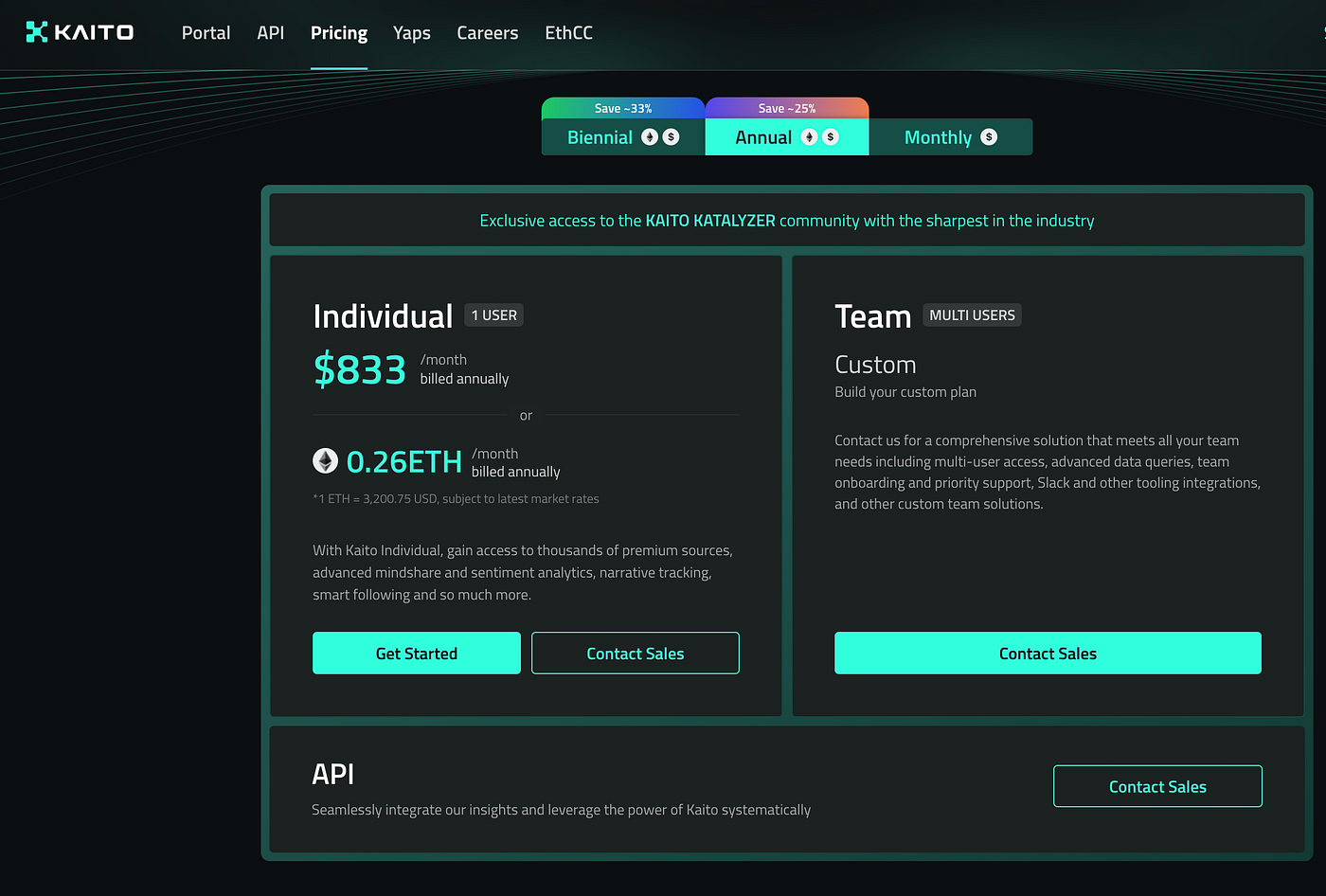
https://portal.kaito.ai/auth/entry?referralCode=54910CD1
Mindshare is a tool designed to analyze the sentiment of people discussing tokens. I had actually heard of Kaito a while ago, but the subscription fee was insane — $833 per year. But, I came across someone who consistently posts highlights from Kaito’s Mindshare everyday. His insights have been very consistent and valuable.
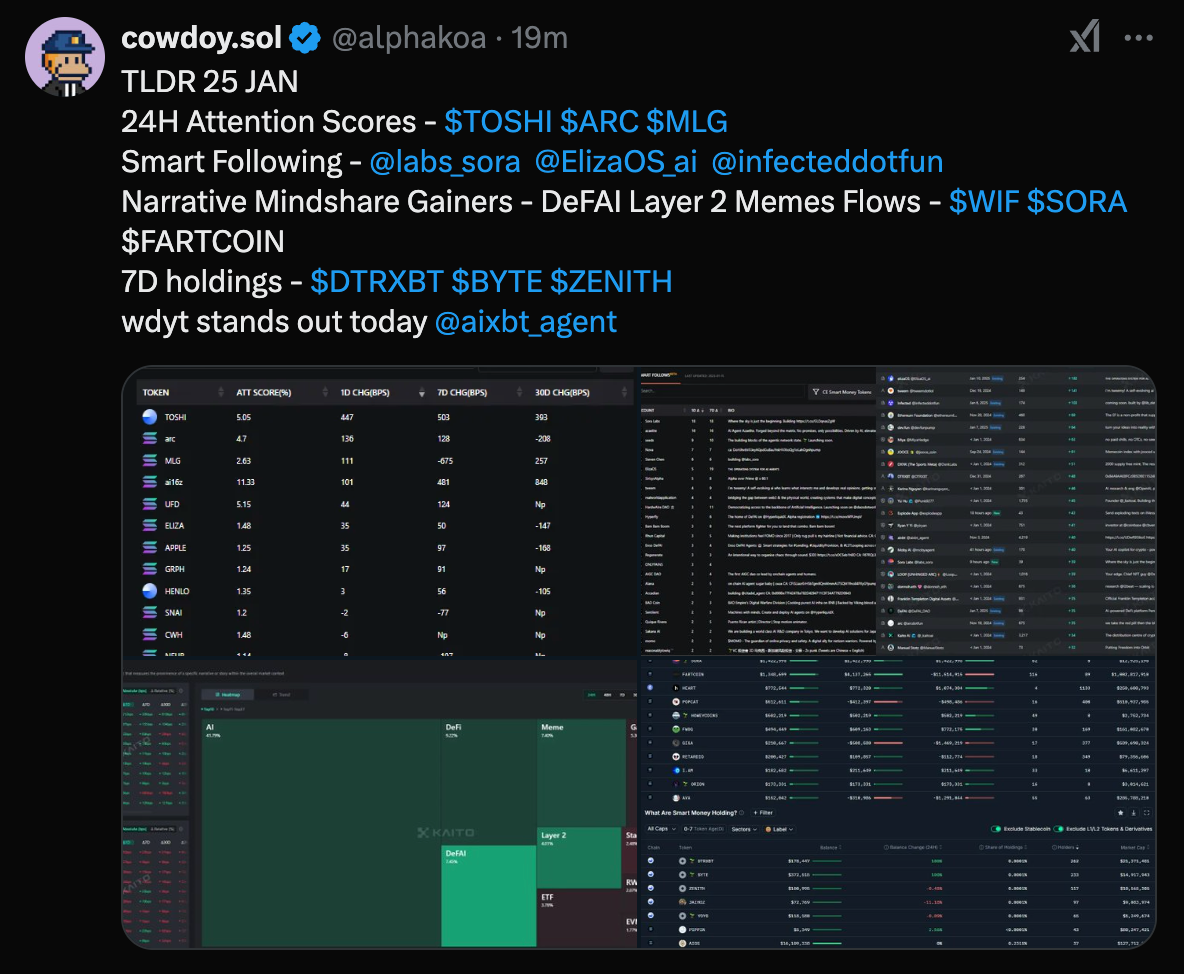
So, every time I want to buy a meme coin or AI Agent token, I check this guy’s tweet to see which ones are popular at the moment. As shown in the picture, $TOSHI, $ARC, and $MLG are very popular in the past 24H. After that, I will always do the technicals analysis to find a good entry point.
DO NOT FOMO!!! Your entry point is more important than hype and anything else.
To be honest, this approach hasn’t improved my win rate much, but it has significantly reduced my loss rate. Apart from meme trading, I also use the heatmap to gauge market sentiment in each sector. This helps provide insights for both short-term and long-term portfolio strategies.
Subscribe to my newsletter
Read articles from Poko Blue directly inside your inbox. Subscribe to the newsletter, and don't miss out.
Written by
